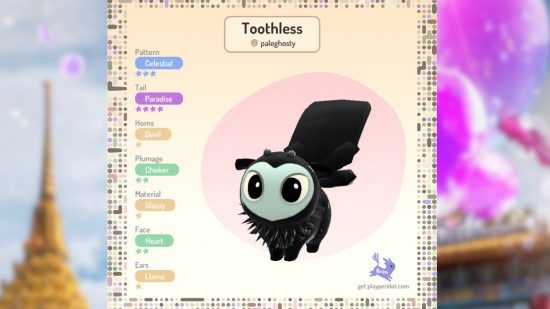
When I first started working at Pocket Tactics a year ago, I vividly remember my team’s excitement every time we received an email from Niantic. I didn’t know it at the time, but their enthusiasm was over Peridot, a new augmented reality (AR) virtual pet game. Once I looked further into what we already knew about the game at the time, I quickly jumped on the bandwagon.
As a long-time Tamagotchi fan, I’m a huge cheerleader for anything virtual pet-related. Plus, I love Pokémon Go and consistently need motivation to spend more time outside, so Peridot seemed like the perfect combination of features to hook me. I even got my partner interested so that we could raise and breed our Peridots together.
The Peridot release date finally came and… it was fine. Our household was briefly consumed by Peridot mania for about a week and then we very quickly found ourselves ignoring the app altogether. On paper, this should have been the perfect mobile game for me. So, what went wrong?
Fundamentally, I believe that Peridot suffers from many of the same shortcomings as other AR and location-based titles, even those from within Niantic. First of all, there’s the classic battery life problem. As someone who’s been playing Pokémon Go since launch, I naively hoped that Niantic had found a solution for how quickly its games drain your device’s power, but I was wrong.
Sure, if your phone is struggling you can break out one of the best power banks from our list and keep on trucking, but this doesn’t combat the intense overheating that can come with using your phone and charging it at the same time. Over time I’ve found that Pokémon Go’s battery-saver mode and other optimizations have shown improvement in the seven years since launch, but I think Peridot’s overuse of your phone’s camera is the main contributing factor to its energy hunger.
That’s not the only problem that the camera causes either. Something that several of the PT team members noticed when we tried to take our Dots out for walks was how invasive it feels to hold your phone up and essentially film your surroundings just to play a game. Even if you’re not actually recording anyone’s sensitive information, you’re still going to get some weird looks walking down the street with a camera on. As a location-based game, Peridot relies on you taking your Dot to various places in your local area to progress, so not being able to do this without coming off as a creep is a massive downside.
I’m trying not to constantly compare Peridot to Pokémon Go, but given their shared studio and gameplay features, plus all of my personal experience with the latter, it makes sense to link them. If I want to take my buddy Pokémon out for a walk, spin some stops, and catch some new friends, I can do all of the above in Pokémon Go without using my camera. Honestly, I use the AR feature incredibly infrequently. I only turn it on to take funny snapshots of my friends with wild Pokémon or to complete a daily quest.

Some other location-based games don’t engage with AR at all, like the upcoming Kingdom Hearts spin-off title. As you can read about in our Kingdom Hearts Missing-Link preview, this game uses many of the same mechanics as Peridot and Pokémon Go in terms of traversing the world, but doesn’t make use of your camera at all. I think this flexibility is key if you want your game to suit a range of players, all with different schedules, devices, and mobility. Peridot’s insistence that you play in the real world actually limits it severely.
This is especially true when you realize that AR technology is nowhere near ready for this kind of game. As much as I would love to be wrong, the time I spent with Peridot showed me that consumer tech AR still has a long way to go before it feels good to use. I’m not asking for my Dot to blend seamlessly into my surroundings as if they were real – I’m more than willing to suspend my disbelief for a fun mobile game. I just want to be able to pet my Dot, feed them, and dig for materials without constant clipping, gyroscope issues, and errors. Simply put, Peridot needs more time in the oven.
Don’t even get me started on the monetization tactics. Niantic has come under fire in the past for putting barriers in the way of free-to-play fans and its controversial walk-back on remote raid passes in Pokémon Go, so this is nothing new for the genre or the company. My partner and I were so excited to breed our Dots and, as the game’s premise suggests, help repopulate the planet with unique Dots, but we quickly realized that we could only do this if we spent money on more nests, gemstones, and sundrops.

I’ve got nothing against monetizing currencies in mobile games (I am a gacha game fiend after all) but Peridot’s breeding system goes beyond that. You can purchase the gemstones and sundrops that you need to Hatch-A-Dot, but you can also earn them in other ways. The nests, however, as stated on the official Peridot help page, require real currency. You can’t breed without a nest, therefore you can’t breed without spending money. This would be less irritating if cross-breeding and species discovery wasn’t a core tenet of the entire game.
So, it’s fair to say that I haven’t gone back to Peridot. I could be pessimistic and say that the microtransaction-led economy of mobile games (including issues such as forced change, which we’ve discussed before) paired with the fact a phone is so much more than just an AR gaming device sets these projects up for failure. After all, so many of my positive memories of AR come from handheld and console gaming, not mobile tech. Take the Nintendo 3DS’s Face Raiders mini-game for example. Some see it as essentially just a demo of the device’s 3D cameras, but I have a lot of nostalgia for shooting down the warped faces of my relatives at family gatherings.

My partner has fond memories of Invizimals for the PSP and PSVita, another simple yet entertaining example of AR technology succeeding on a handheld games console. This takes the concept a step further into the short-lived toys-to-life genre of games where you use your camera to bring creatures to life using AR cards. Personally, I would love it if toys-to-life saw a revival, but that’s a topic for another feature.
But I won’t be pessimistic here. I truly believe that Peridot is a prime example of how far AR technology and the mobile games landscape have to go to find the sweet spot. I think we can get there – there are a ton of great ideas out there and we’re slowly creating software capable of blending the digital and physical worlds through our devices. It’s just going to take some time and dedication.
Until we do see some serious changes in AR games like Pokémon Go, at least we have some of the best cat games, dog games, monkey games, and snake games for virtual pet lovers to enjoy instead.